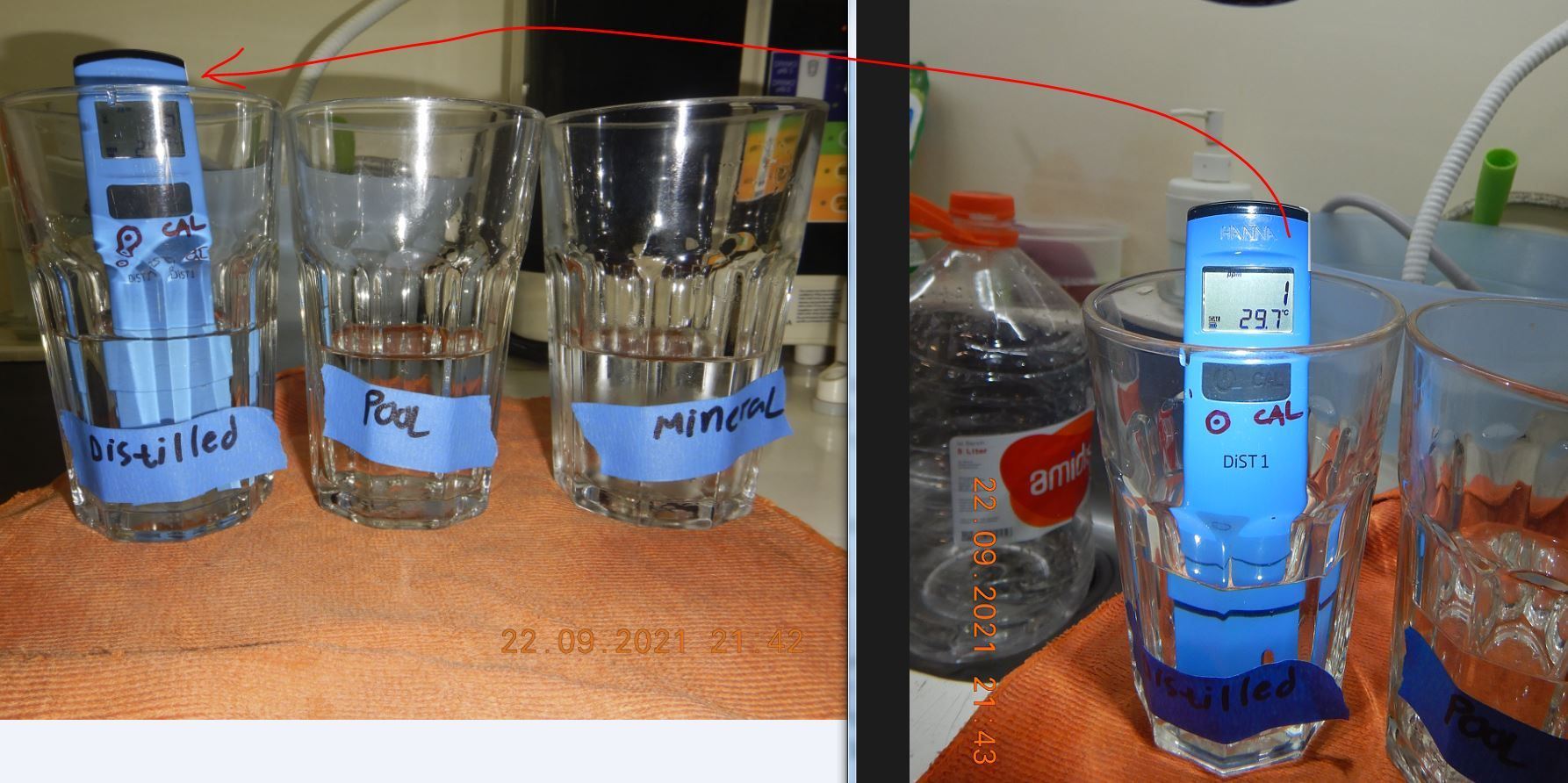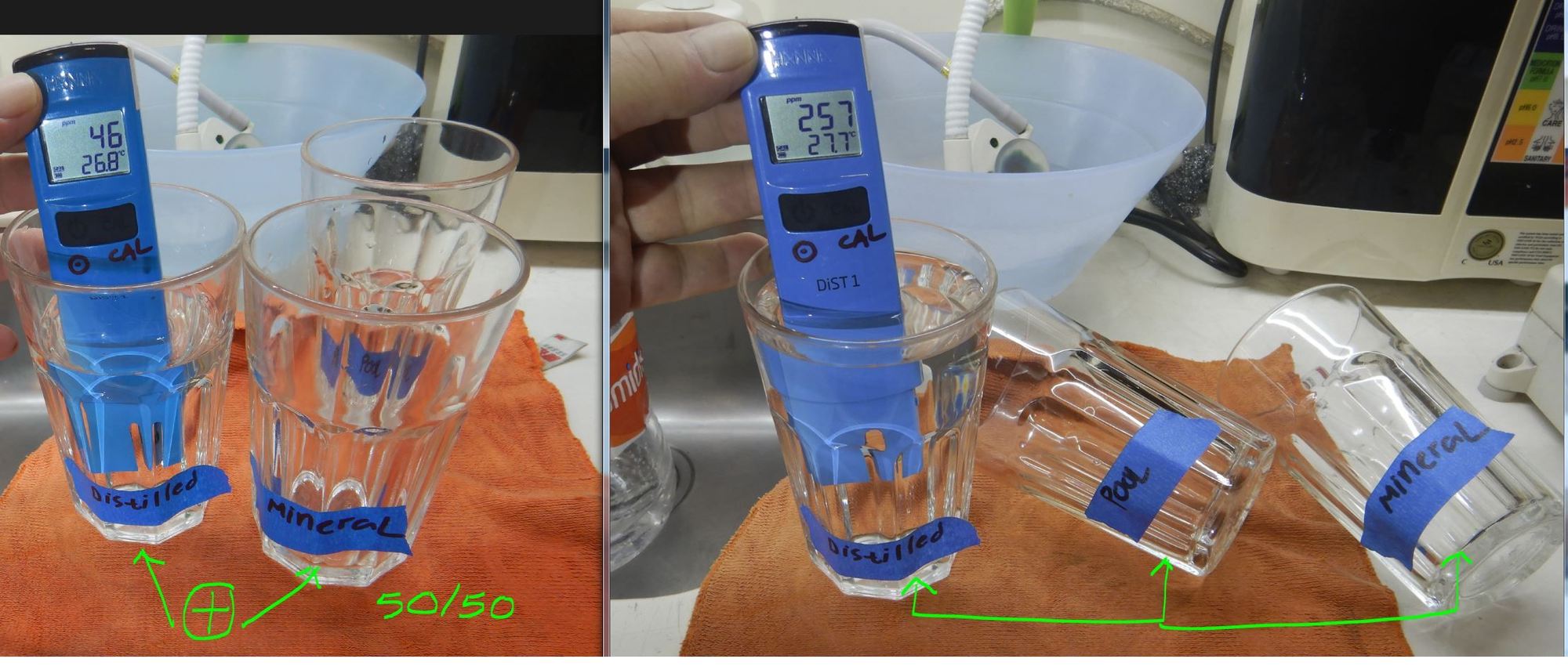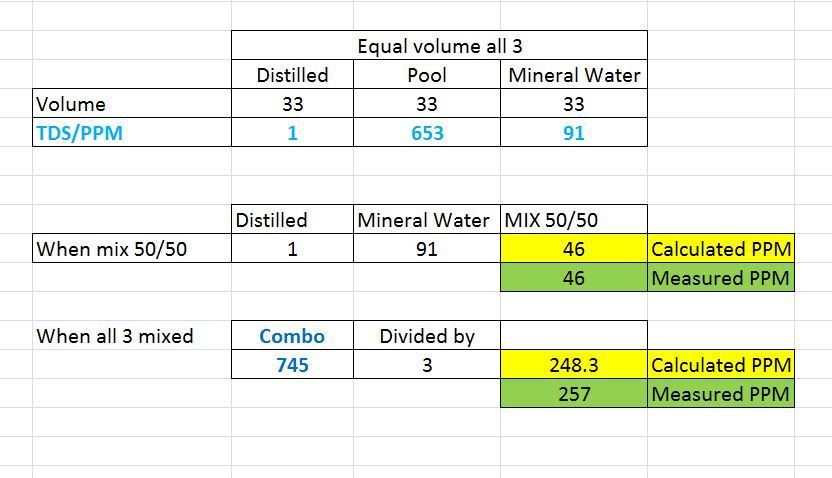What kind of coolant is this?
#26
MBWorld Fanatic!
Join Date: May 2021
Location: Tampa, FL
Posts: 2,075
Received 1,673 Likes
on
1,043 Posts
2008 E350 (W211 @170K), 2012 ML350 (W166 @119K), 2014 E350 (W212 @100K), 2015 ML350 (W166 @96K)
Here is a link worth reading https://in-situ.com/us/pub/media/sup...-Tech-Note.pdf
The article reminded me of how some instruments may not be great at giving absolute values, but they are very useful just because they provide consistent measurements ( i am assuming linearity as well). For example, take a ruler and hide all the numbers, and the units completely. It is still a great tool to measure comparatively, with the same level of accuracy. A carpenter can build great pieces w/o ever knowing what the real measures are, just relative values.
Or going to doctor1, with one of them I am 195 lbs, and at another one I am 200lbs. Does it really matter? The important part is how much I gained/lost between visits to the same doctor, while the absolute value is just to either hide it or show it off at diet competitions

Last edited by juanmor40; 09-22-2021 at 04:15 PM.
#27
MBWorld Fanatic!
Join Date: May 2018
Location: Jakarta-Indonesia
Posts: 4,480
Received 4,553 Likes
on
2,666 Posts
2014 - W212.065 - E400 ( M276.820, 3 liter Turbo) RWD not Hybrid
I agree Juan, TDS meter is a decent guide only.
The only chemistry mystery I need to find out is the unknown re-action the 100% coolant when mix with water 50/50 produce, in respect to how EC reading is taken by the Hanna instrument.
TDS going up close 500% by which is should go down by 50% is just too weird for non-chemist me
Other TDS meter you can choose the reference : ppm NaOH or ppm NaCl. I remembered my old one was reference to those 2 and it can be used to read sea water at 22,000 ppm or more.
Something like this : http://www.4oakton.com/TechTips/OAK_TT08.pdf
My goal was simple. Detect "contamination" in the coolant between new and a used one. Hoping the EC reading can help there.
The only chemistry mystery I need to find out is the unknown re-action the 100% coolant when mix with water 50/50 produce, in respect to how EC reading is taken by the Hanna instrument.
TDS going up close 500% by which is should go down by 50% is just too weird for non-chemist me

Other TDS meter you can choose the reference : ppm NaOH or ppm NaCl. I remembered my old one was reference to those 2 and it can be used to read sea water at 22,000 ppm or more.
Something like this : http://www.4oakton.com/TechTips/OAK_TT08.pdf
My goal was simple. Detect "contamination" in the coolant between new and a used one. Hoping the EC reading can help there.
#28
MBWorld Fanatic!
Join Date: May 2021
Location: Tampa, FL
Posts: 2,075
Received 1,673 Likes
on
1,043 Posts
2008 E350 (W211 @170K), 2012 ML350 (W166 @119K), 2014 E350 (W212 @100K), 2015 ML350 (W166 @96K)
I agree Juan, TDS meter is a decent guide only.
The only chemistry mystery I need to find out is the unknown re-action the 100% coolant when mix with water 50/50 produce, in respect to how EC reading is taken by the Hanna instrument.
TDS going up close 500% by which is should go down by 50% is just too weird for non-chemist me
Other TDS meter you can choose the reference : ppm NaOH or ppm NaCl. I remembered my old one was reference to those 2 and it can be used to read sea water at 22,000 ppm or more.
Something like this : http://www.4oakton.com/TechTips/OAK_TT08.pdf
My goal was simple. Detect "contamination" in the coolant between new and a used one. Hoping the EC reading can help there.
The only chemistry mystery I need to find out is the unknown re-action the 100% coolant when mix with water 50/50 produce, in respect to how EC reading is taken by the Hanna instrument.
TDS going up close 500% by which is should go down by 50% is just too weird for non-chemist me

Other TDS meter you can choose the reference : ppm NaOH or ppm NaCl. I remembered my old one was reference to those 2 and it can be used to read sea water at 22,000 ppm or more.
Something like this : http://www.4oakton.com/TechTips/OAK_TT08.pdf
My goal was simple. Detect "contamination" in the coolant between new and a used one. Hoping the EC reading can help there.
tarting from the premise the meter works correctly on water alone (as you proved), and glycol-water mixture (still to prove) the process would be to fill in the cooling system at the desired/correct ratios, run it for a bit to establish the baseline: water-glycol-cooling system metals and measure the TDS content.. That is the only baseline I see useful. The next premise is that the system is closed, and absolutely nobody will introduce something else into it. Then, periodic TDS measurements should show "differences from the baseline" and those should be correlated to the state of either the coolant, metal surfaces or leakage (head gasket for example).
Now for the first premise. How can we prove the TDS can work consistently with the glycol mixture (blue, yellow, violet, any) ? A thought experiment would be to take coolant from its original bottle, measure original TDS and then measure incremental controlled modifications of TDS. Say adding common salt in known amounts to predict future TDS, and then measure it, i.e. re/calibration line for the glycol-common salt. Here is a page from North Dakota University explaining the process for water
https://www.ag.ndsu.edu/publications...-water-quality
Even if the above works, my only concern would be the "nobody will introduce something else", because once violated the system must be evacuated and recalibrated. That is the problem when working with relative measurements though.
Anecdotally, here is a discussion of TDS going through the roof once glycol is in the system
https://forum.heatinghelp.com/discus...glycol-systems
Unfortunately, no explanation.
#29
MBWorld Fanatic!
Join Date: May 2018
Location: Jakarta-Indonesia
Posts: 4,480
Received 4,553 Likes
on
2,666 Posts
2014 - W212.065 - E400 ( M276.820, 3 liter Turbo) RWD not Hybrid
I think its too troublesome for non-chemist me/us to investigate further.
Anyway 3 years or max 4 years is my maximum target for the coolant life.
So it would be O to not "read" its TDS value
Anyway 3 years or max 4 years is my maximum target for the coolant life.
So it would be O to not "read" its TDS value

The following users liked this post:
juanmor40 (09-27-2021)












